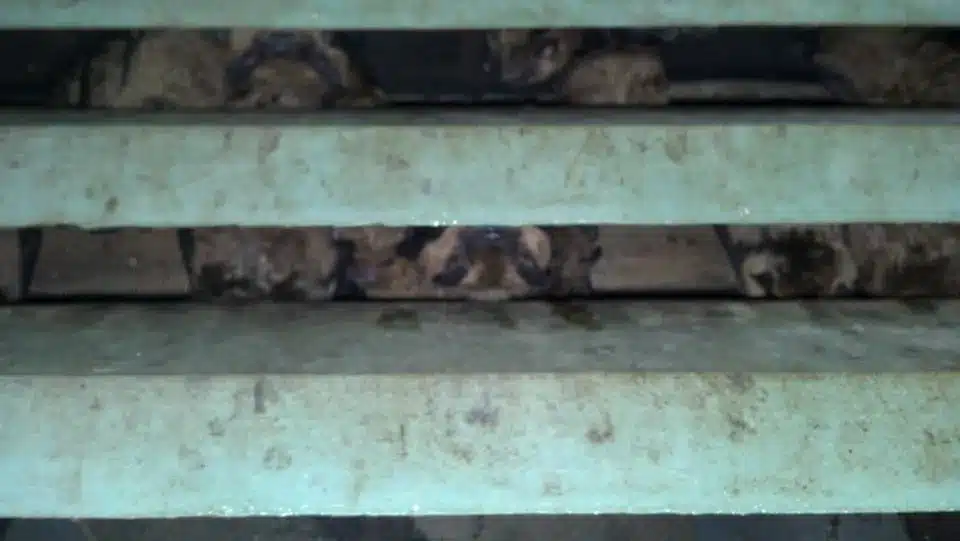Are you needing bats removed from the attic?
If so you need to deal with now. If bats are not removed by May 1st you may have to wait till after August 15th to get them out of your attic and eaves. Bats are a protected species in the United States and can not be dealt with during their breeding season of May 1st to August 15th. Juvenile bats generally are able to fly and follow the adults out of their roosting site by August 15th.
Having bats living in your attic can cause all sorts of problems. As bats hang upside down roosting in your home they poop and pee a lot. Bat droppings are referred to as bat guano. Bat guano and urine will build up in large amount over time. Excessive bat guano and urine can seep through drywall and collapse ceilings. As piles of bat guano decompose they create ideal conditions for the fungi Histoplasmosis. Histoplasmosis is a fungi that grows in bat guano, bird droppings, human feces, and other decomposing waste. Histoplasmosis is very hazardous to the health of humans and their pets. Many things can causes Histoplasmosis spores to become airborne. For instance a breeze blowing through attic vents from outside, air leaks from heat and a/c duct work, and other activities can increase the likelihood of human contact causing a serious lung infection. Symptoms of Histoplasmosis are similar to those of pneumonia. Both can become fatal if left untreated. Histoplasmosis infections can be treated with antifungal medications, unlike pneumonia that’s treated with antibiotics. Bats and bat guano also carry and spread other pesky parasites like fleas and bat bed bugs.
Another concern with bats living in the attics of homes is rabies. Bats are common carriers of rabies. A bite from a rabies infected bat can spread the disease to humans and their pets. If bitten you would need to go through a series of unpleasant rabies treatments. With bats living in your attic it is common for one or more to find their way into the living quarters of your home and greatly increasing the likelihood of contact with one. There are numerous documented cases of humans being bitten by bats while they sleep as a result of a bat finding its way inside the home.
Everything we have talked about so far, a colony of bats living in your attic and the risk to you and your property, all started from a single bat finding its way into your attic. Once one invades your home the likelihood of it leaving on its own is not that great. More will follow and a colony will form. It is common for a bat colony to grow into the hundreds and even thousands. Left to grow the damage to your property and the health risk to you will also grow. Along with that the expense to remove the bat colony, clean up of the bat guano, and the repair of property damage will also greatly increase.
Take the time to walk outside and inspect the exterior walls of your house. Look for guano droppings that are stuck to the walls below the eaves and gable vents. In some cases bat guano can be found beginning to pile up on the ground below a bats entry point. Although bats are not as active in the winter months they do remain in attics. Bats will become more active as spring arrives increasing the signs of their presence. Bat guano stuck to the exterior walls of homes is one of the quickest and easiest ways for a home owner to realize they have bats. If discovered early bats can be removed and excluded much easier and at a more reasonable cost to the home owner.

